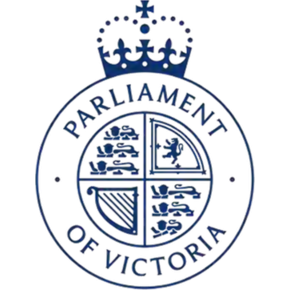A companion guide to the Ned Kelly display at State Library Victoria. Features physical and digital items in our collections and links to external sites.
The Kelly Trial – The Scene in Court (November 6th, 1880) IAN06/11/80/201
After the fatal shooting at Stringybark Creek and his subsequent capture at Glenrowan, a jury found Ned Kelly guilty of Constable Thomas Lonigan’s murder, and a death sentence was handed down by Justice Redmond Barry.
The trial was depicted in a wood engraving in the Illustrated Australian News, pictured above. Kelly stands in the dock while Barry oversees the case from the bench, wearing the wig and robes of the British legal system. The trial took place on October 28-29, 1880 at the Central Criminal Court on Russell Street, across the road from the Library.
This type of engraving was common in 19th century publications. As there is no official transcript of the Kelly trial, knowledge of the proceedings comes from journalists who reported on the two-day event. The press played an important role throughout the gang’s evasion of the police and Ned Kelly’s trial, communicating information and shaping public opinion.
After 25 minutes of deliberation, Barry delivered the jury’s verdict and his sentence. Kelly declared his mind to be easy and clear, causing a sensation in the crowded courtroom. Kelly, who was advised by his lawyers not to testify, said that he expected the result, but had he addressed the witnesses himself he could have cleared his name. In a potent exchange with Barry, Kelly repeats the phrase, ‘no one understands my case as I do,’ and his last words to the judge were, ‘I will see you there, where I go.’

Last scene of the Kelly drama: the criminal on the scaffold (November 20, 1880) A/S20/11/80/305
Ned Kelly was hanged in the Old Melbourne Gaol on 11 November 1880. His execution was witnessed by various prison and police officials and by a number of journalists. His final words were reported by most observers to be ‘ah well I suppose’ or ‘ah well I suppose it has come to this’. One observer reported Kelly’s final words as ‘such is life’, but these words are now strongly contested and dismissed as invented (Dawson, S. E. (2016). Ned Kelly's last words: 'Ah, well, I suppose' (PDF download). Eras, 18(1), 38-50).
He was 25 years old when he died.
A digital copy of Edward "Ned" Kelly's death inquest is available to view online through the collection of Coroners Inquests at the Public Records Office of Victoria (PROV). To find this death inquest,
You can follow the same instructions to find death inquests for the other members of the Kelly Gang.

Death mask of Ned Kelly [not dated] H2001.241
In the 19th century it was common for authorities to make plaster ‘death masks’ of an executed criminal's face, to conduct phrenological analysis. The masks were often put on public display and – not surprisingly – Ned Kelly’s death mask was a source of public fascination.
Kelly was hanged on 11 November 1880. An hour after his death, his hair and beard were shaved, and plaster was applied to his face and head to make a death mask. The next day, the mask was on public display in Bourke Street, along with explanations of how the shape of the head and face represented his criminal tendencies.
This death mask in our Library collection is one of only a few casts, taken from the original mold. It was made by Maximillian Kreitmayer.
 All the living and the dead : from embalmers to executioners, an exploration of the people who have made death their life's work
by
All the living and the dead : from embalmers to executioners, an exploration of the people who have made death their life's work
by
The police inquiry commission (April 23, 1881) A/S23/04/81/129
In March 1881, a Royal Commission was called to examine police conduct and the so-called "Kelly outbreak". In our Manuscripts Collection, you can find the five notebooks detailing the Royal Commission of Enquiry into the Victorian Police Force and the circumstances of the Kelly gang outbreak (click to view catalogue record). These materials are also available online through the Victorian Parliamentary papers database (below).


 The Kelly outbreak, 1878-1880 : the geographical dimension of social banditry
by
The Kelly outbreak, 1878-1880 : the geographical dimension of social banditry
by
Redmond Barry by T.F. Chuck (1872) H96.160/1788
Sir Redmond Barry (1813–80) was an instrumental figure in Melbourne's early history, establishing many of the cultural and educational institutions that continue to shape our city's character and reputation. The Anglo-Irish lawyer arrived in Melbourne in late 1839, and subsequently became a founding judge of the Supreme Court. In 1853 he was appointed by Lieutenant-Governor La Trobe as Chancellor of the University of Melbourne and Head of the Trustees of the Melbourne Public Library, positions he held for nearly 30 years until his death. During that time he also oversaw the establishment of the Museum and the National Gallery.
Barry died on 23 November 1880, twelve days after Ned Kelly's execution.


View this page in your preferred language using the dropdown menu ↓

With no official transcript, newspaper accounts of the Kelly trial are particularly important records. To learn how newspapers can be used to research this and other court cases, visit the Newspaper articles page of our Court Cases in Australia guide.
The Beechworth Courthouse was the site of multiple trials and hearings for the Kelly Gang. Visit the the Beechworth Courthouse Kelly Trials website to explore the history the courthouse and its most famous trials.

Ned Kelly and Redmond Barry's names have long been linked, with Barry presiding over trials for Kelly and his mother, Ellen. In a very different way than what Kelly may have intended though, the two men are now reunited through their connection with the Library: Barry as co-founder of the Library and namesake of the reading room in which Kelly's armour is displayed, and Kelly as one of the most infamous figures represented in our collections.
You will find a portrait of Redmond Barry at the opposite end of the Redmond Barry Reading Room.